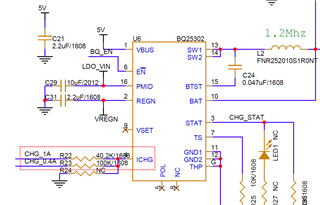hello. I implemented it as shown in the picture below, referring to "9.2.3 Typical Application with MCU Programmable Charge Current" in the datasheet.


I expected it to work like the truth table below, but it doesn't work properly.(The STAT pin blinks.)

How should I modify the circuit?
Should I use Relay for complete blocking?
Please help.

